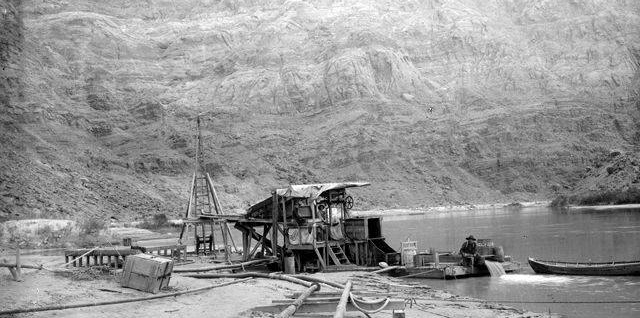
 by Anne Mariah Tapp, Energy Director
by Anne Mariah Tapp, Energy Director
Ticking time bombs like the abandoned gold mine that recently released millions of gallons of contaminated water into Colorado’s Animas River, are found throughout the West, threatening a resource much more precious than gold: water. In an effort to prevent future catastrophes, a diverse coalition of Native American tribes, local governments, and environmental groups, including the Grand Canyon Trust, have united to reform mining rules on federal lands and ensure that mine owners cannot simply walk away from old mines.
For years, the antiquated 1872 Mining Law, a vestige of 19th century expansionism, has resisted legislative attempts at reform, defended by the entrenched interests of the mining industry and its powerful lobby. Now tribes and counties directly impacted by uranium mining (categorized as hard rock mining, just like gold and silver, under the 1872 law) have decided to take matters into their own hands, trying a creative new approach to reform tough-to-crack, outdated hard rock mining rules.
Our coalition has capitalized on a little-known legal tool known as an Administrative Procedures Act (APA) petition for rulemaking, which allows the public to ask government agencies to put new rules or regulations in place or modify those already in effect. We are using our APA petition to ask the Bureau of Land Management and the Forest Service to reform the existing rules governing mining on the public lands they manage.
As the Havasupai Tribal Council states in their resolution of support for the petition: “the gap in regulation that permits abandonment without reclamation needs to be acknowledged and fixed by both the Forest Service and Bureau of Land Management so that there is cradle-to-grave protections for the people, the wildlife, the land and the water….”
The Havasupai Tribe is particularly concerned about uranium mining, which threatens tribal sacred sites as well as the sole source of drinking water for the tribe’s reservation at the bottom of the Grand Canyon. Uranium mining has a proven track record of contaminating the Grand Canyon’s water resources. Toxic and radioactive uranium contamination from the Orphan Uranium Mine, operated in the 1950s, has left Horn Creek with uranium levels in excess of the Environmental Protection Agency’s safe drinking water standards.
To fix the problems in the current Forest Service and Bureau of Land Management rules, our coalition requests four main changes to the existing mining rules:
These common-sense regulations already apply to grazing, logging, and other uses of public lands. It is only reasonable that the mining industry – with its potential to severely damage precious water resources – should be held to equally strong regulatory standards.
County governments across the Colorado Plateau have stepped forward in support of the reform effort, especially in light of the Animas spill. “As a county with hundreds of abandoned mines affecting two headwaters rivers of the Colorado Basin, we really place a high importance on sustainable uses of our public lands and protecting water,” said Art Goodtimes, a commissioner in San Miguel County, Colorado. “The proposed rules will help ensure that inactive mines are reclaimed in a timely manner and the environment will be better protected than what happened with our San Juan County neighbors.”
Solutions to mining contamination are direly needed, and today’s petition represents such a solution. The Animas River disaster must mark the end of the days when irresponsible mining threatens our region’s livable future. This petition, coupled with legislative solutions such as Representative Grijalva’s mining reform legislation, could bring us into a new era – an era in which toxic mining contamination does not threaten the health of our groundwater and rivers. As we move toward solutions on multiple fronts, today’s petition provides the federal agencies with a reasonable path forward that will benefit western communities, taxpayers, water resources, and our most treasured landscapes.
The 74-page APA petition for rulemaking prepared by the Stanford Environmental Law Clinic was submitted Tuesday, August 25, along with resolutions and letters of support from the Havasupai Tribe, the Hualapai Tribe, the Zuni Tribe, Coconino County in Arizona, and San Miguel County in Colorado, as well as more than a dozen national and regional environmental organizations including the Sierra Club, the Center for Biological Diversity, Earthworks, and others, representing millions of individuals who treasure our public lands and waters.
Under the APA, the agencies are required to review and respond to the petition.
Arizona Governor Katie Hobbs is the latest elected official to call for an environmental review of Pinyon Plain uranium mine.
Read MoreDr. Laura Crossey explains what scientists know about groundwater in the Grand Canyon region.
Read MoreMore than 275,000 pounds of radioactive materials imported from the Japan Atomic Energy Agency headed to Utah's White Mesa Mill.
Read More